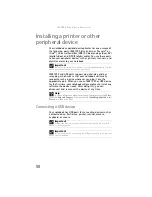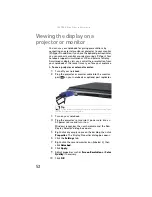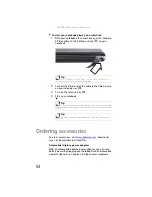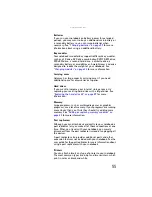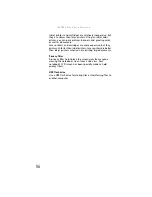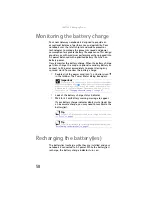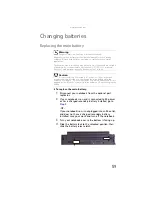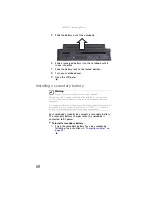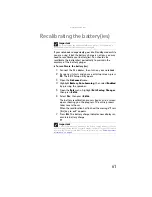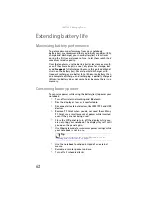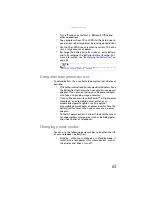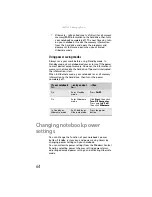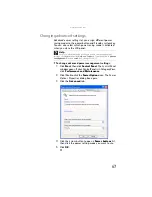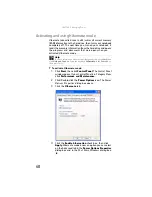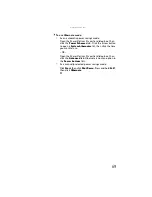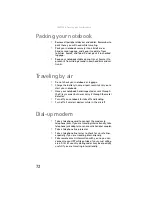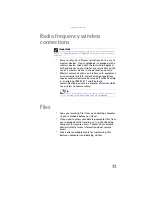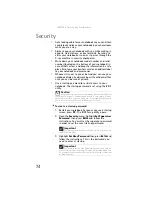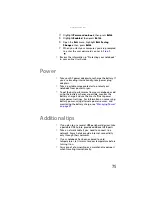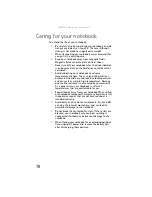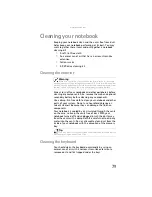
: Managing Power
64
•
Hibernate
- (also called
save to disk
) writes all current
memory (RAM) information to the hard drive, then turns
your notebook completely off. The next time you turn
on your notebook, it reads the memory information
from the hard drive and opens the programs and
documents that were open when you activated
Hibernate mode.
Using power saving modes
Always save your work before using Standby mode. In
Standby mode, your notebook reduces or turns off the power
to most devices except memory. However, the information in
memory is not saved to the hard drive. If power is interrupted,
the information is lost.
When in Hibernate mode, your notebook saves all memory
information to the hard drive, then turns the power
completely off.
Changing notebook power
settings
You can change the function of your notebook’s power
button, Standby system key, and power-saving timers by
changing power settings on your notebook.
You can customize power settings from the Windows Control
Panel by selecting power schemes, setting power alarms,
adjusting advanced power settings, and activating Hibernate
mode.
If your notebook
is...
...and you want
to...
...then
On
Enter Standby
mode
Press
F
N
+F3
.
On
Enter Hibernate
mode
Click
Start
, then click
Turn Off Computer
.
Press and hold
S
HIFT
,
then click
Hibernate
.
In Standby or
Hibernate mode
Exit Standby or
Hibernate mode
Press the power
button.
Summary of Contents for Laptop
Page 1: ... NOTEBOOK REFERENCEGUIDE ...
Page 2: ......
Page 7: ...www gateway com v Appendix A Legal Information 123 Index 133 ...
Page 8: ...Contents vi ...
Page 13: ...CHAPTER2 5 Checking Out Your Notebook Front Left Right Back Bottom Keyboard area ...
Page 78: ...CHAPTER 5 Managing Power 70 ...
Page 90: ...CHAPTER 7 Maintaining Your Notebook 82 ...
Page 102: ...CHAPTER 8 Upgrading Your Notebook 94 ...
Page 103: ...CHAPTER9 95 Troubleshooting Safety guidelines First steps Troubleshooting Telephone support ...
Page 151: ......

